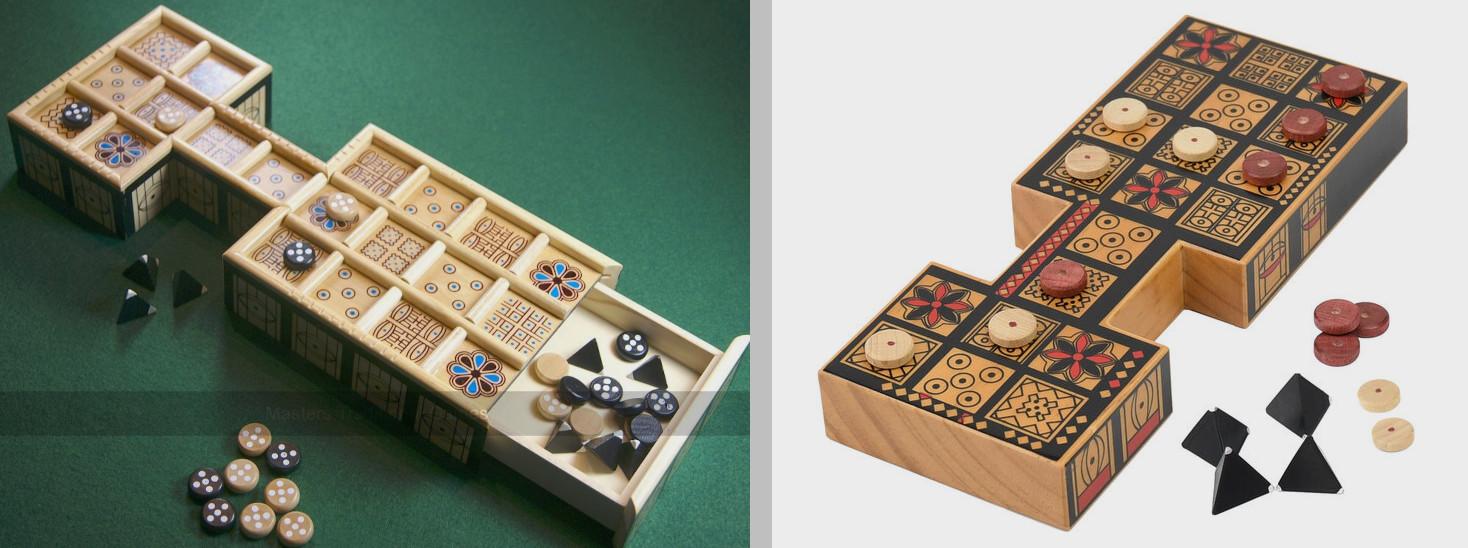Rules of the Royal Game of Ur

The Royal Game of Ur is a battle! You and an opponent race to score your pieces first to secure victory.
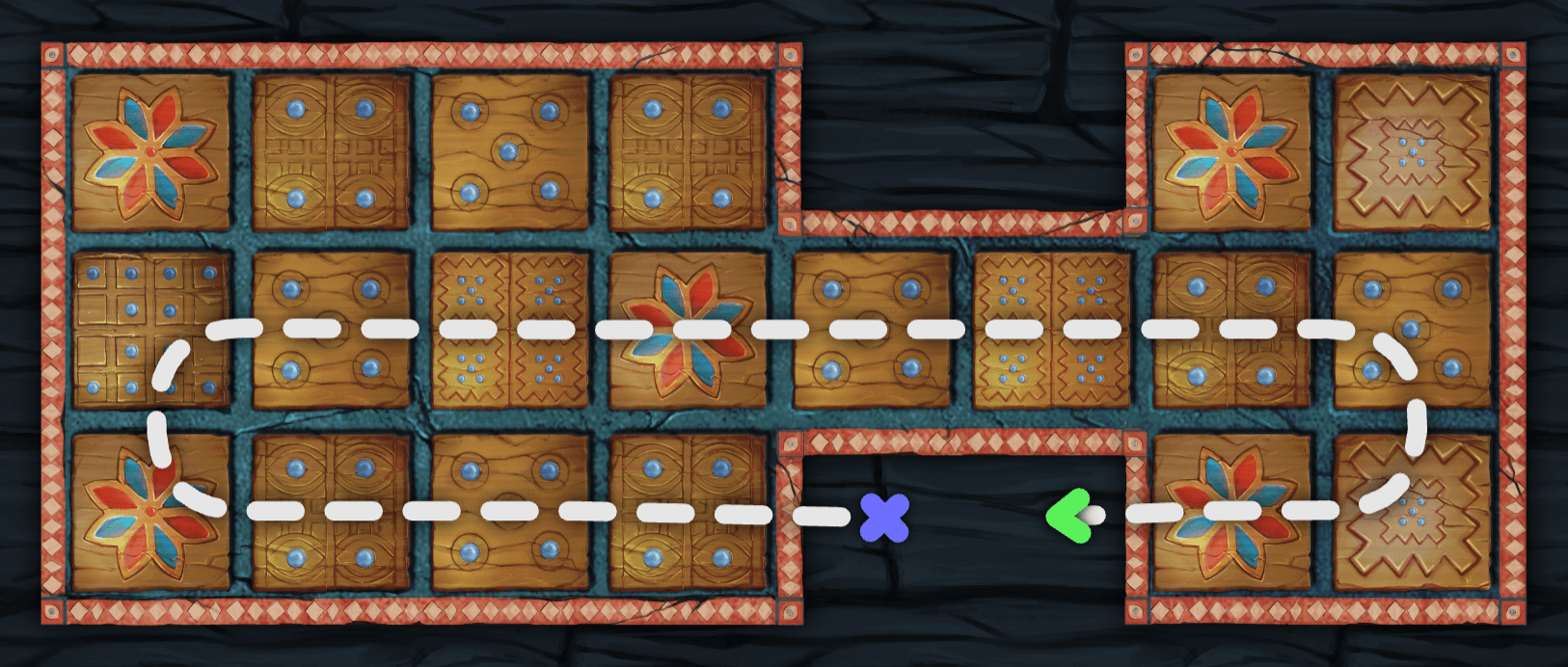
The Royal Game of Ur dates back over 4600 years to the city of Ur in ancient Mesopotamia. Many different rules were probably played since then, but the Finkel ruleset is the most popular today.
- Goal: Score all your pieces before your opponent!
- Roll Dice: Players take turns rolling the game's unique dice.
- Move: Select a piece to move by the number of tiles you rolled.
- Capture: Land on a piece to capture it, sending it back to the start.
- Rosettes: The rosette tiles grant safety and an additional roll!
Read the rules in more detail below. There are also alternative rulesets such as Blitz or Masters that we describe later in this article.
Table of Contents
The Rules 📜
The most commonly played rules for the Royal Game of Ur were created by Irving Finkel, a curator at the British Museum. These rules are usually referred to as the "Finkel ruleset."
Equipment you need
The Royal Game of Ur requires a board, pieces, and dice. These can be made out of paper, bought, or even 3d-printed. You will need:
- 1 × game board.
- 4 × tetrahedral dice. You can also substitute in other types of dice.
- 7 × pieces for one player. Light tokens are commonly used.
- 7 × pieces for the other player. Dark tokens are commonly used.
The New York Times provides their own printable PDF board, pieces and dice. If you wish to get to playing the Royal Game of Ur quickly, their templates are a great option!
Rob Manders also provides a 3D-printable board, dice, and pieces on Makerworld. If you have your own 3D printer and want a nice board to play on, I recommend checking it out!
Rule 1 - Game Setup
The Royal Game of Ur requires no special setup of pieces, so the setup for games is quick.
- Clear the game board.
- Players start with seven pieces each.
- Roll the dice to decide the starting player. Higher roll wins!
- The starting player must roll again for their first move.
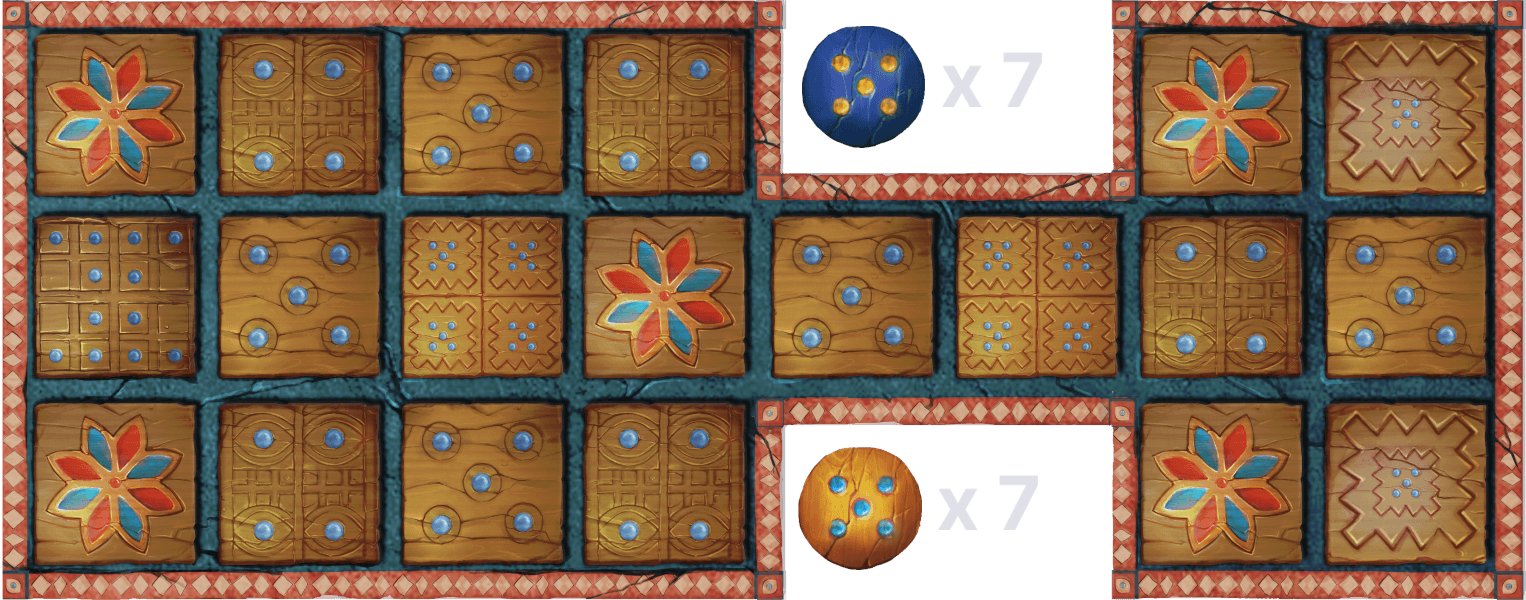
Rule 2 - Roll the Dice
The unique tetrahedral dice used for the Royal Game of Ur are read by counting the number of die with a marked corner facing upwards after rolling.
In our online game, click or tap on your dice to roll them. The value shown represents the number of tiles that you can move one of your pieces! You can read more about these unique dice by visiting our dice page.
Rule 3 - Move your Pieces
After rolling, select one of your pieces to move by the number of tiles that you rolled. One player moves their pieces along the path shown below, and the other player follows a vertically mirrored path. Your turn can only be skipped if you have no available moves. Otherwise, you must move a piece!
In our online game, click, double-tap, or drag your pieces to move them on the board.

Rule 4 - Capture Pieces
You can capture your opponent's pieces by moving your pieces on top of their pieces! Capturing your opponent's pieces is a great way to slow the progress of your opponent. Beware though, under the Finkel ruleset, the rosette tiles are safe tiles! This means that you cannot capture pieces on rosettes.
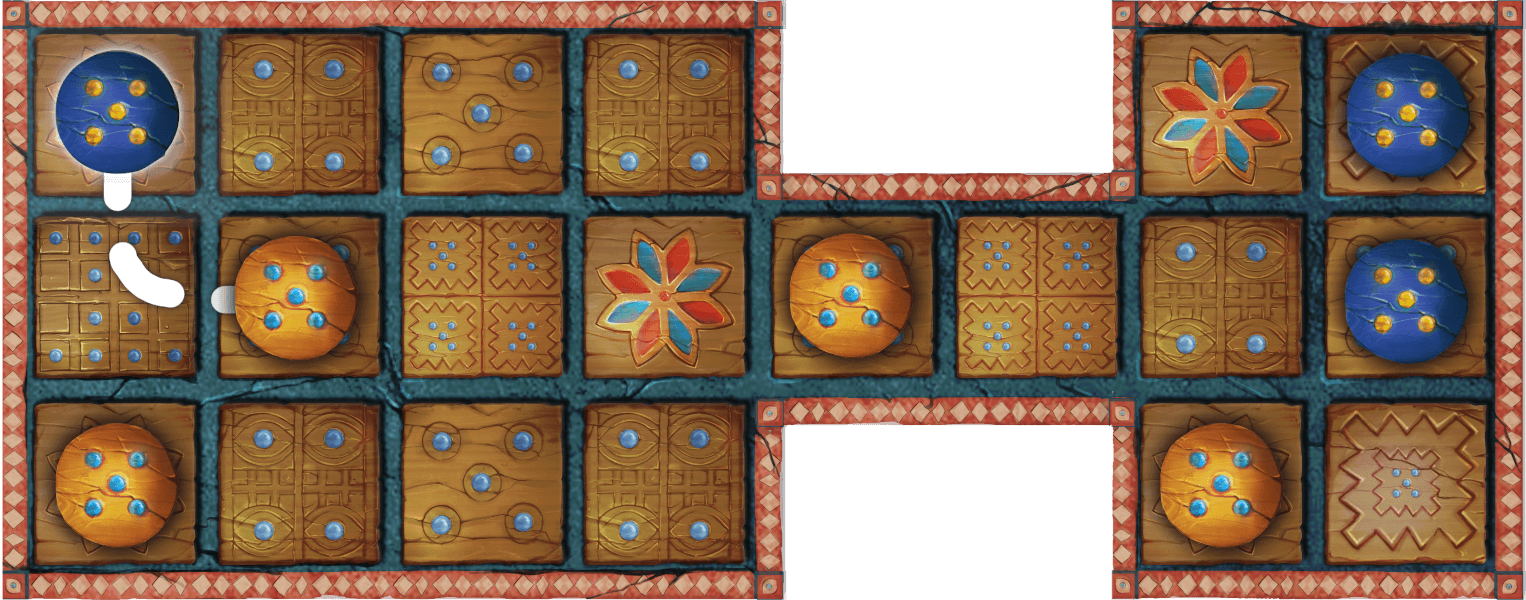
Rule 5 - Rosette Tiles
The rosette tiles are the most important tiles on the board of the Royal Game of Ur! As a symbol of the goddess Ishtar, they provide benefits to players who land upon them. Under the rules proposed by Irving Finkel, landing on a rosette tile gives you the following benefits:
- Landing on a rosette grants an extra roll of the dice.
- Pieces on rosette tiles are safe from capture.
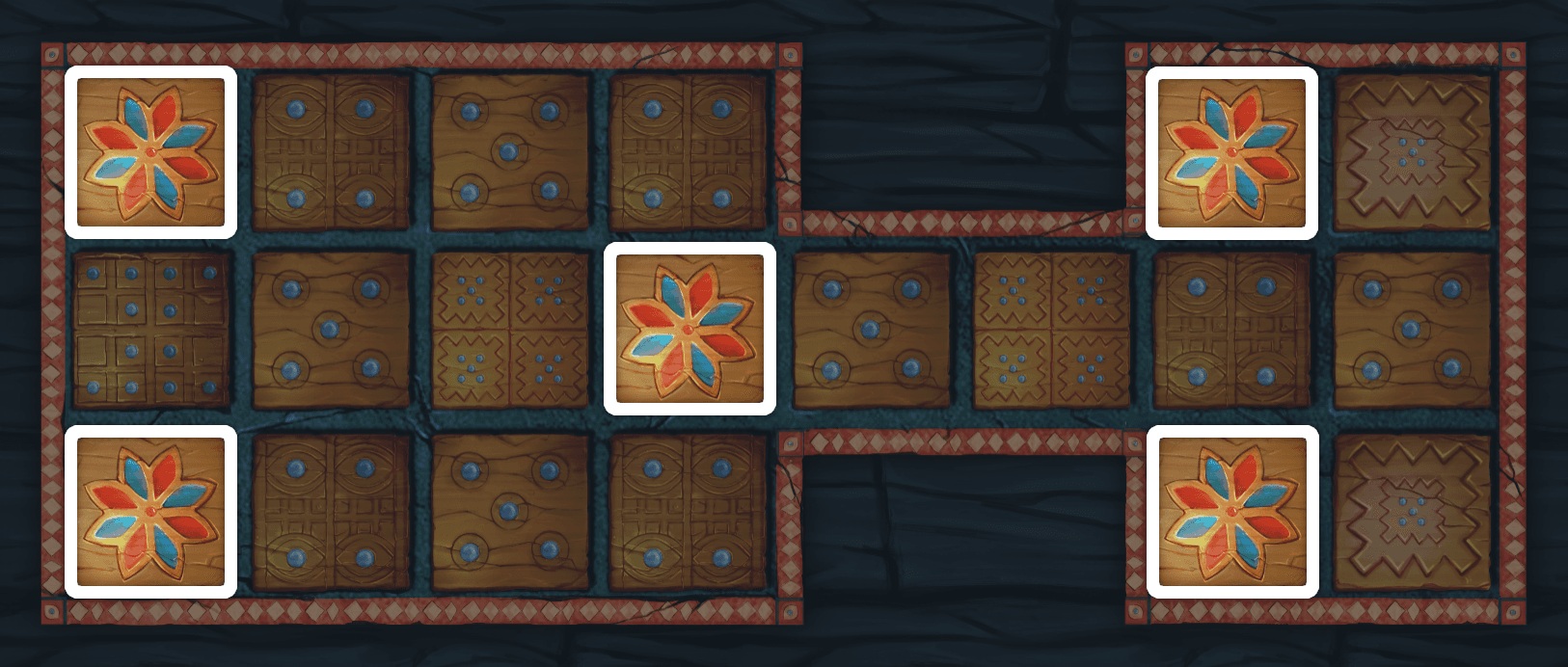
Rule 6 - Score your Pieces!
Winning requires you to score all your pieces! You can score pieces by moving them off the board at the end of your path. You need an exact roll to take a piece off the board. For example, to score a piece from the final rosette tile, you would need to roll exactly a one.

Play the Game!
Now that you've got the rules sorted, you can give the game a go! The best way to understand the rules is to play them yourself. Alternatively, you can continue reading to learn more about different ways that people play the Royal Game of Ur, and the origins of these rules.
Alternative Rulesets of Ur
The most commonly played rules for playing the Royal Game of Ur are the rules proposed by Irving Finkel, a curator at the British Museum. However, there are also many other sets of rules that are commonly played! Below, we describe the most popular rulesets for playing Ur, and their origins.
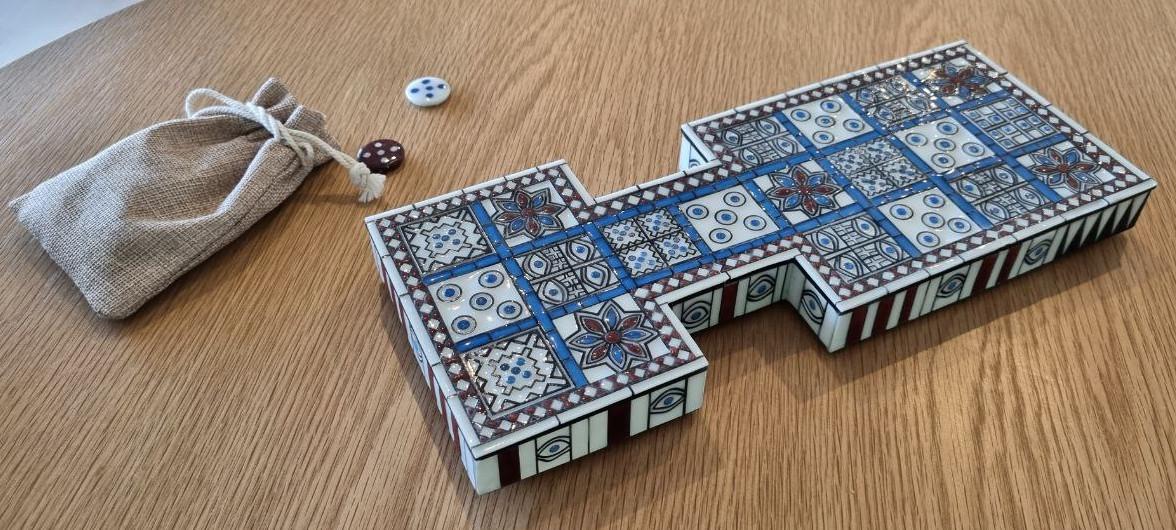
Origins of the Finkel Ruleset 
The Finkel rules are the most popular set of rules for the Royal Game of Ur. These are the same rules that we described above! These rules became particularly popular after the video "Tom Scott vs. Irving Finkel" that was filmed by the British Museum. You can watch that video here.
These rules were created by Irving Finkel with the goal of making a fun game to play on the Royal Game of Ur boards excavated by Sir Leonard Woolley in the 1920s. It is a common misconception that these rules originate from Finkel's deciphering of an old cuneiform tablet from 177 BC. In fact, the old cuneiform tablet deciphered by Finkel describes a more complex set of rules, with links to gambling and astronomy.
The primary influences for Irving's ruleset are inferences from the shape of the board and the recurring symbol of the rosette. The shape of the board lends itself well to a two-player race game. Additionally, the rosette is a symbol of the goddess Ishtar, so it follows that landing on a rosette tile would give benefits to the player. These two inferences allowed Irving to experiment and come up with the rules that we all know and love today!

Masters Ruleset 
The Masters rules are also quite popular for playing the Royal Game of Ur. These rules were developed by James Masters based on similar historical evidence that was used by Irving Finkel in the development of his rules. However, Masters came to a different conclusion than Finkel on a couple of points:
- The path around the board should be longer, so that the rosette tiles occur consistently every 4th tile, as is also seen for the related Game of Twenty Squares.
- Players should use three dice instead of four, as most historical game sets were found with 3 or 6 dice.
- Rolling zero on the dice should allow you to move 4 tiles, to match the significance of the 4-tile gap between rosette tiles.
- The rosette tiles should not be safe, as if they are, the rosette tiles in the safe zones of each player have a useless effect.
These changes cause a dramatic shift to the strategy of the game, as there are no longer any safe zones for pieces after they leave the start of the board. Additionally, Masters path causes interesting dynamics at the end of the board, as the paths of each player cross from different directions. If you'd like to learn more about James Masters' development of his set of rules, you can read more from James Masters here.
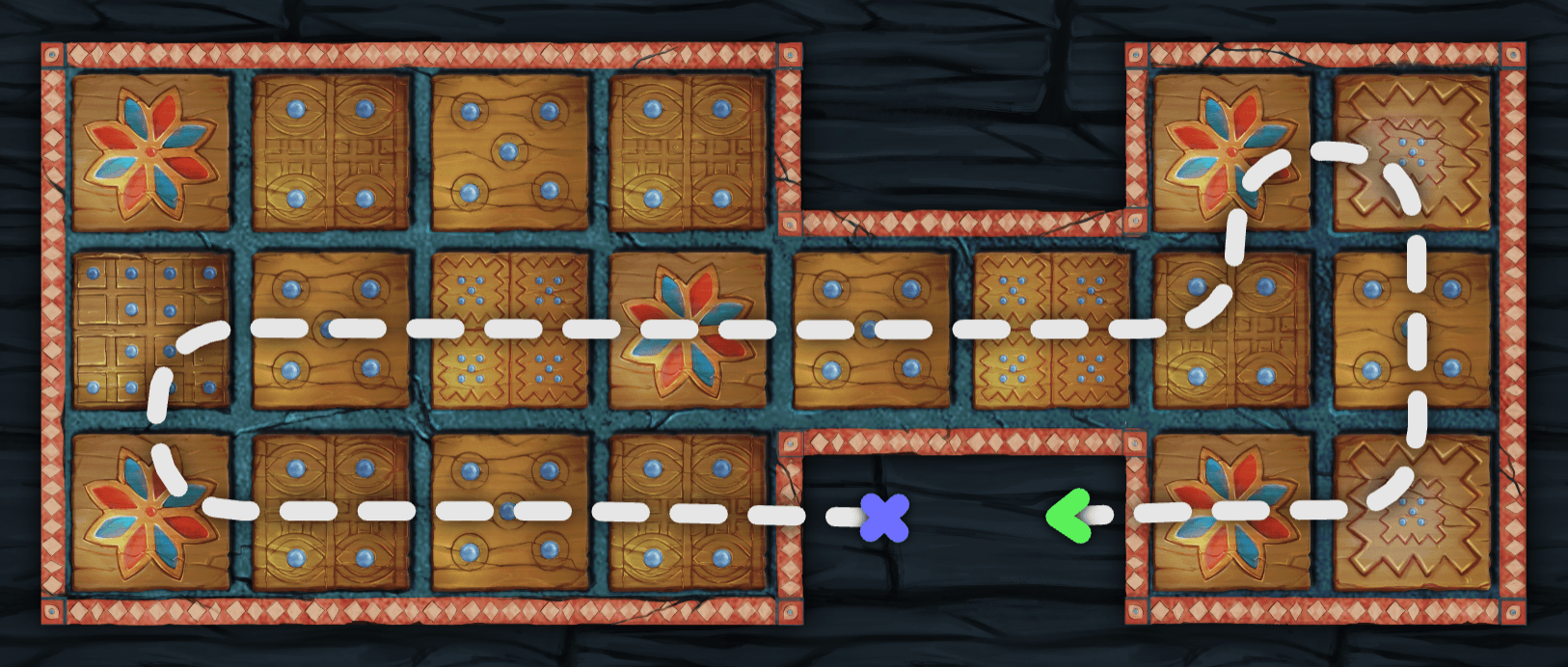
Blitz Ruleset 
The Blitz rules were developed by us here at RoyalUr. We created these rules with the aim of providing an alternative ruleset with shorter and more exciting games. The most important change made for the Blitz rules is that capturing pieces also grants extra rolls! This can lead to decisive turns where the whole pace of the game can change at once with multiple captures in a row. Here are all the differences from the Finkel ruleset:
- Players start with 5 pieces.
- Rosettes are not safe from capture.
- Pieces follow the Masters path.
- Captures grant an extra roll!

Tournament Engine 
The tournament engine ruleset was developed by the société internationale d'UR to provide a competitive set of rules that lead to decisive tournaments. It is the most complex and difficult to master set of rules that is commonly played for the Royal Game of Ur. Tournament engine introduces two important new mechanics: the ability to move backwards, and the ability to stack pieces. These changes drastically alter strategy in the game. The full set of differences to the Finkel ruleset are:
- Players start with 5 pieces.
- Rosettes do not grant an extra roll, but do remain safe.
- Pieces follow the same path as Masters path.
- Pieces may be stacked on rosette tiles. Once stacked, the stack of pieces moves as one. The only time that stacked pieces are split up is when the stack is captured by your opponent!
- You may move your pieces backwards. However, unlike forwards moves, backwards moves are not forced. If you have no other moves but to move backwards, you may choose to skip your turn.
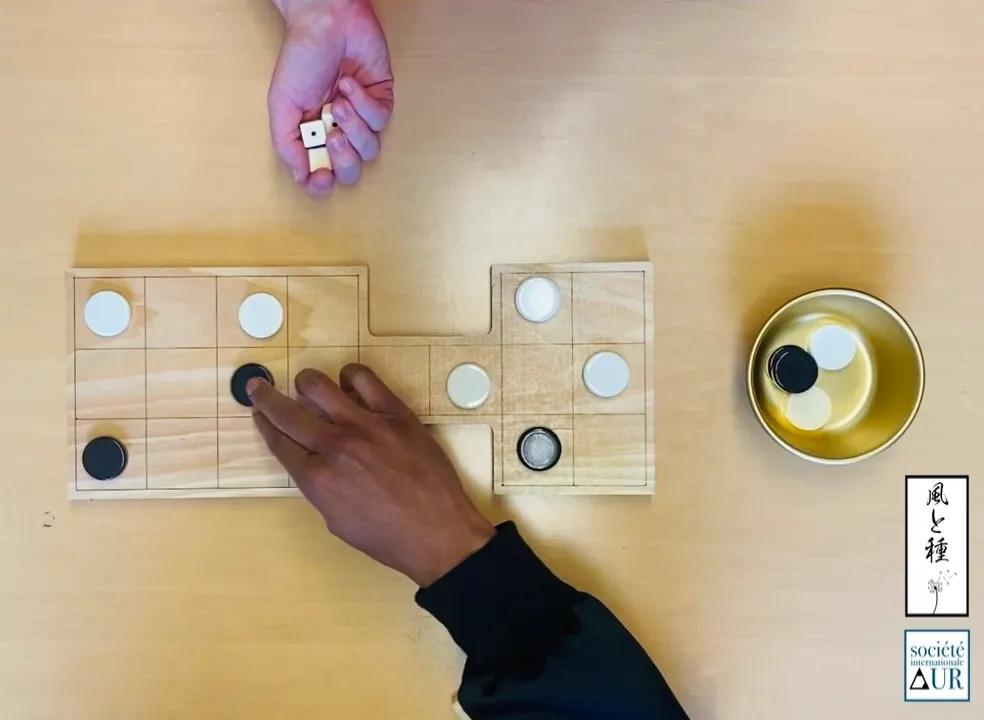
Buy Physical Boards
We are obviously big fans of playing board games online here at RoyalUr.net, but even we have to admit that there is something special about playing on a real, physical board. If you are looking to buy a physical board, we recommend that you check out Masters Traditional Games! I have personally met their founder, James Masters, and visited their warehouse in St Albans. James Masters' work as a games historian even led to the Masters rule set here on RoyalUr.net! Purchases made by clicking a link from RoyalUr.net will also help to support our work. Click here to visit Masters Traditional Games.
